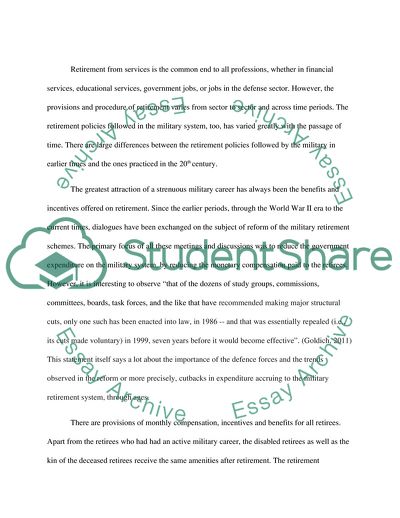Cite this document
(The Existent Retirement System for the Defense Sector Research Paper Example | Topics and Well Written Essays - 2250 words - 1, n.d.)
The Existent Retirement System for the Defense Sector Research Paper Example | Topics and Well Written Essays - 2250 words - 1. https://studentshare.org/military/1756596-what-are-the-pros-and-cons-of-the-new-military-retirement-system
The Existent Retirement System for the Defense Sector Research Paper Example | Topics and Well Written Essays - 2250 words - 1. https://studentshare.org/military/1756596-what-are-the-pros-and-cons-of-the-new-military-retirement-system
(The Existent Retirement System for the Defense Sector Research Paper Example | Topics and Well Written Essays - 2250 Words - 1)
The Existent Retirement System for the Defense Sector Research Paper Example | Topics and Well Written Essays - 2250 Words - 1. https://studentshare.org/military/1756596-what-are-the-pros-and-cons-of-the-new-military-retirement-system.
The Existent Retirement System for the Defense Sector Research Paper Example | Topics and Well Written Essays - 2250 Words - 1. https://studentshare.org/military/1756596-what-are-the-pros-and-cons-of-the-new-military-retirement-system.
“The Existent Retirement System for the Defense Sector Research Paper Example | Topics and Well Written Essays - 2250 Words - 1”. https://studentshare.org/military/1756596-what-are-the-pros-and-cons-of-the-new-military-retirement-system.


